Address These 8 Factors That Influence Employee Retention
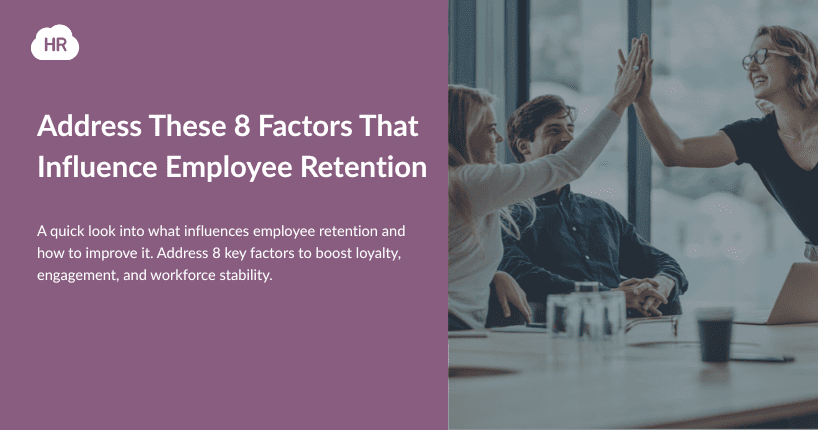


 Cut onboarding time
by 60%—here's the
Ultimate Checklist
that helped do it.
Cut onboarding time
by 60%—here's the
Ultimate Checklist
that helped do it.

People come, and they go—especially at work! Sometimes it’s due to involuntary turnover like layoffs, while some employees resign or take another job.
But it’s much better if the people you hire stay for the long term. Why? Because it costs an organization 6 to 9 months of an employee’s salary to replace them. For example, it will cost you $30,000 to $45,000 to hire and train a replacement for a $60,000 salary employee.
Curious how much it will cost you? Try our employee turnover calculator.
High employee retention also helps foster trust and engagement between employees and employers, which is very important for maintaining a motivated and engaged workforce with a strong sense of loyalty.
Simply put, businesses can't afford not to care about the happiness of their employees. First, you need to understand the factors that significantly affect it. Then, if you find any gaps in your processes, improve them now rather than regret inaction later. Below we've listed actionable strategies to address the factors influencing employee retention, including effective recognition and reward practices.
1. Competitive Wages and Benefits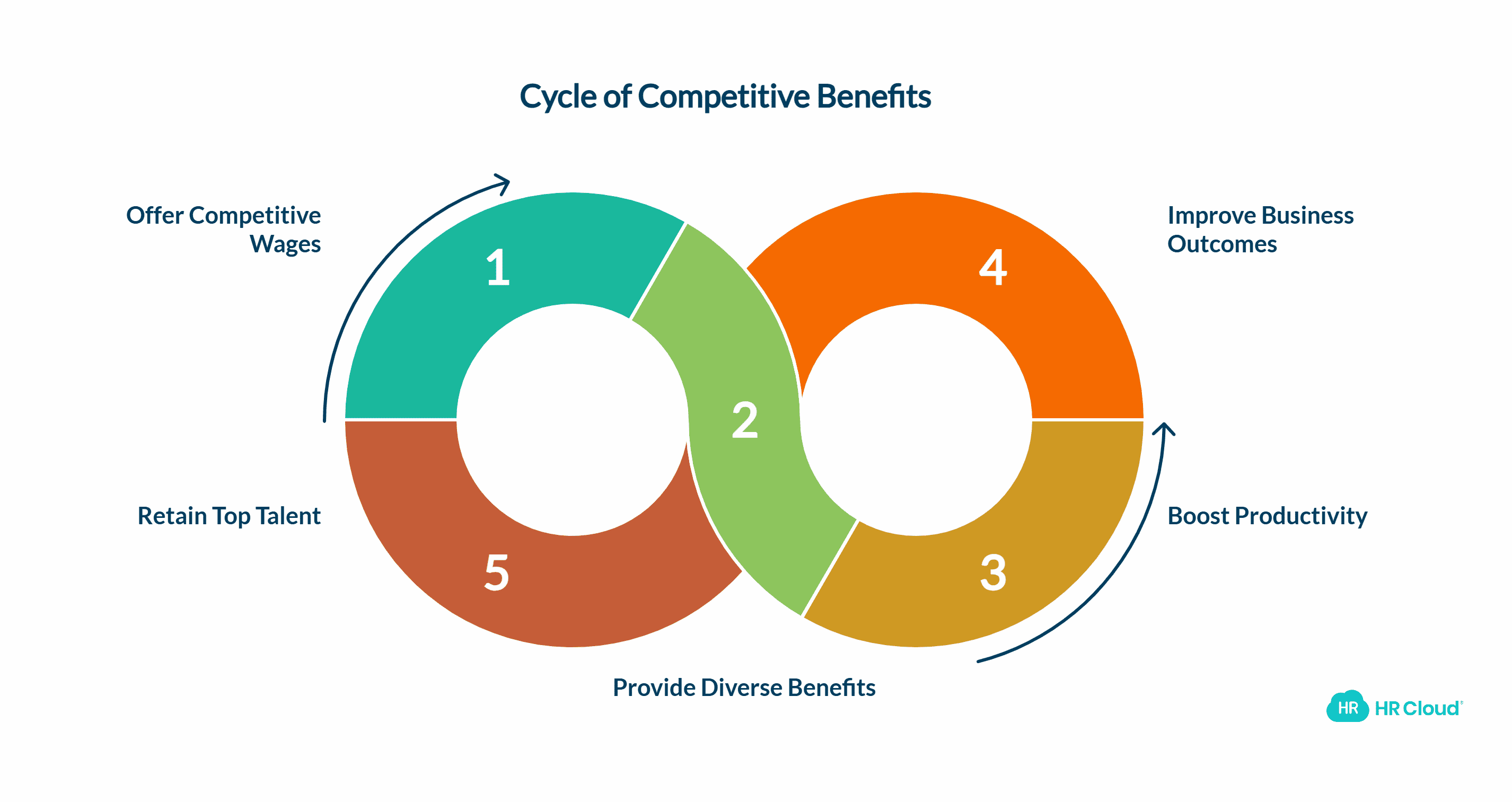
Everyone wants a job that pays them well and offers them great benefits. And employees feel like a company cares about them when they receive competitive benefits.
So make sure that your employees are fairly compensated for their work. This can include offering a competitive base salary, bonuses, and other incentives such as paid vacation, technology reimbursement, health insurance, 401K plans, assistance with educational expenses through programs like Pell Grants, tuition reimbursement, etc.
Offering these benefits will not only make your job roles more attractive but will also help you create a productive workforce. It will also help you attract and retain top talents in your company. As a result, your business outcomes will improve, and your conversions will see a major boost.
Consider implementing employee recognition rewards programs that grow in value over time or get better with tenure to help prevent employees from leaving for greener pastures. That way, they don't have to start from scratch elsewhere.
What You Can Do:
Now’s the best time to review and assess the current benefits you offer to your employees. If you currently don’t have an employee rewards program designed to improve over time, some examples are:
-
Bonus structures that increase with tenure
-
Granting more paid time off for employees with greater lengths of service
-
Stock options with vesting periods
-
401(k) matching contributions with vesting periods
For newer employees, you can look into enhancing your current health benefits. Alternatively, you can even offer unique benefits such as continuing education, discounts on products or services, laundry services, and free food. These flexible rewards can significantly boost staff motivation and overall job satisfaction.
2. Onboarding and Training
Do your employees leave within the first six months? Are they taking on lateral responsibilities at other businesses? If you are having problems with onboarding new hires, then you have short-term retention problems that you need to address ASAP.
So, have you reviewed or upgraded your recruitment processes recently? The way you recruit, onboard, and train employees has an impact on employee turnover. Failing to address retention at this stage might result in losing the best employees immediately.
What You Can Do:
Most onboarding concerns come from inaccurate job depictions during the interview stage. Employees are less likely to stick around if you aren't clear.
To address this, be honest. Give them the obligations that come with the role they are applying for. Make sure that all candidates are clear on expectations from the start. This will increase the likelihood that they will stay with your organization. Implementing a robust performance management system during onboarding can also help set clear expectations and goals from the beginning.
3. People and Culture
Humans are social creatures. Above all things, we want to create an emotional connection with the people around us. That's why there's an increasing average number of employees who want to be in workplaces where they feel like they belong.
Creating a favorable work environment that emphasizes rewards and recognition will work wonders for you and your employees! An enhanced company culture will reduce time spent worrying about productivity, employee engagement, motivation, and retention.
What You Can Do:
Part of human resources' responsibilities is to carefully examine the company's values and consider how you can convey them to your staff in a tangible way.
If your organization emphasizes creativity and flexibility, engage with your team members to create flexible working arrangements that meet the demands of both the individual and the company. Here are some ways to go about this:
-
If you value transparency, make it easy for employees to access relevant documentation and approach dispute resolution with empathy and honesty.
-
If respect is a corporate value, offer diversity and inclusion training programs to tackle unconscious biases.
-
You can also demonstrate that you care by asking for and acting on employee feedback.
- Implement employee appreciation initiatives to foster a culture of recognition and support.
4. Work Schedules
The pandemic has forced a lot of companies to transition into a permanent work-from-home structure. And employees love the fact that they don’t necessarily need to be present in the office and can work on flexible schedules. It helps them save time and money from the daily commute and gives them the ability to utilize their time more productively.
By offering a flexible work schedule, you allow your employees to have more control over their time. This is a great way to offer them a better work-life balance. It also shows your employees that you trust them and value their time and well-being. This, again, is very important for creating a strong work culture and improving job satisfaction.
What You Can Do:
You can offer flexible work schedules in a variety of ways. For example, you can allow them to choose their start and end times, offer compressed work weeks, or give them the option to work permanently from home. Remote working software could help you manage your remote employees quite easily. Additionally, consider implementing a flexible rewards system that aligns with these varied work arrangements, further enhancing employee satisfaction and intrinsic motivation.
5. Recognition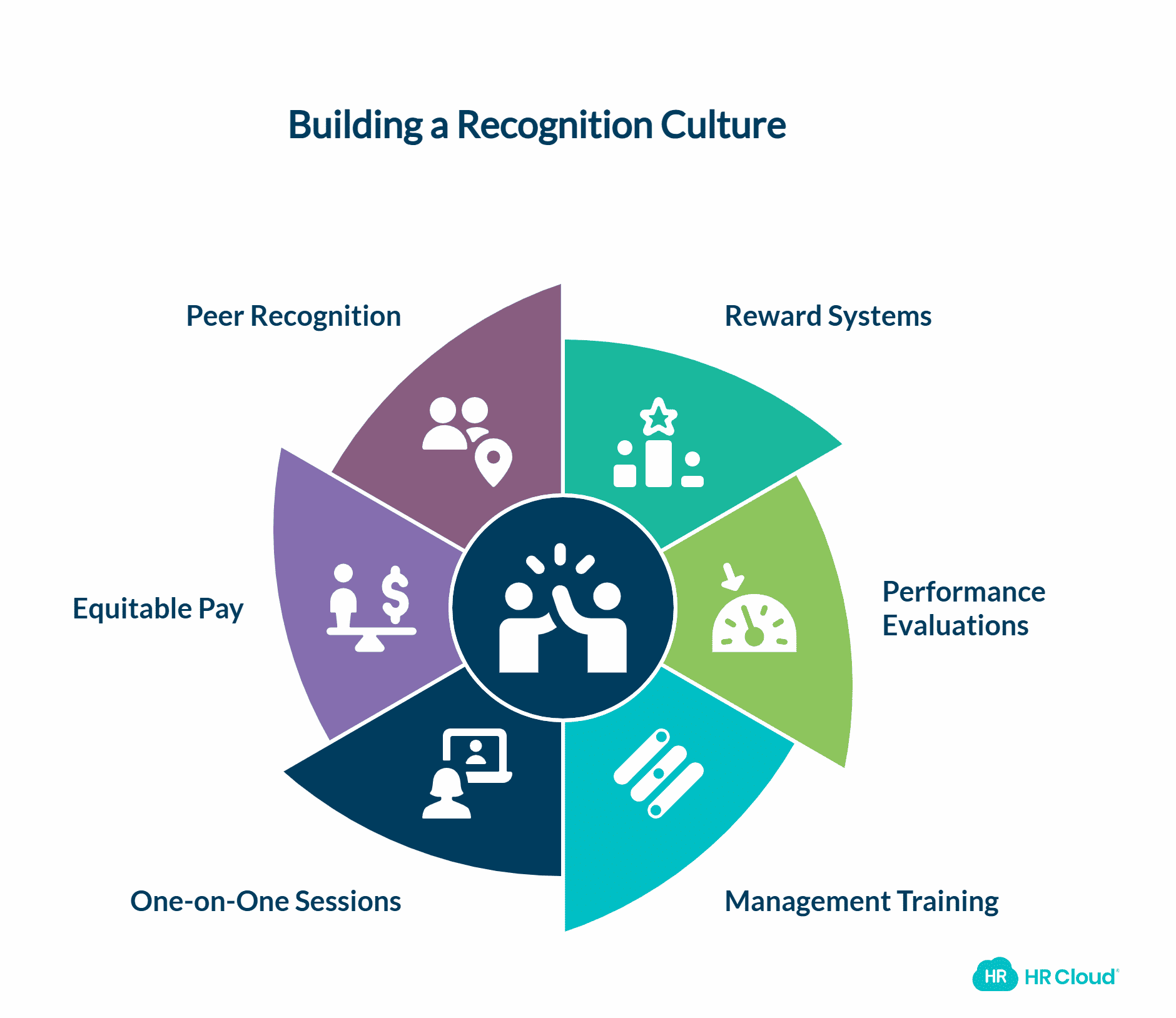
No one appreciates feeling unappreciated. Employee turnover can be influenced by a lack of recognition, which can reflect a poor management style. It will inevitably lead to employees seeking the attention they deserve elsewhere.
And while a lack of acknowledgment may not cost you your best employees immediately, failing to address it will result in low morale and decreased productivity.
Create a recognition culture where employees’ hard work is recognized and appreciated. This makes working for the company enjoyable and rewarding. Encourage employees to participate in team-building activities and celebrate successes.
You should also acknowledge and reward them for their accomplishments and hard work. This can be done through bonuses, awards, or public recognition. Sometimes even a simple “Thank you” or “Well done” can go a long way in motivating employees and making them feel appreciated.
What You Can Do:
Find ways for employees to feel heard and recognized. Everyone loves receiving positive feedback, and employee retention is heavily influenced by leadership's active listening and recognition of employee successes.
In practice, this will look something like:
-
Implementing a reward system to recognize small and big wins
-
Providing a yearly performance evaluation
-
Training management personnel to provide positive reinforcement
-
Scheduling one-on-one sessions between employees and their supervisors regularly
-
Making sure that they are paid a salary that is equal to the role they perform
- Encouraging peer-to-peer recognition to foster a supportive work environment
Remember, recognition is a powerful tool for both intrinsic and extrinsic motivation. We recognize that a well-designed recognition platform can significantly boost employee morale and productivity. However, be cautious of recognition fatigue by varying your approach and ensuring that recognition remains meaningful and personalized.
6. Work-Life Balance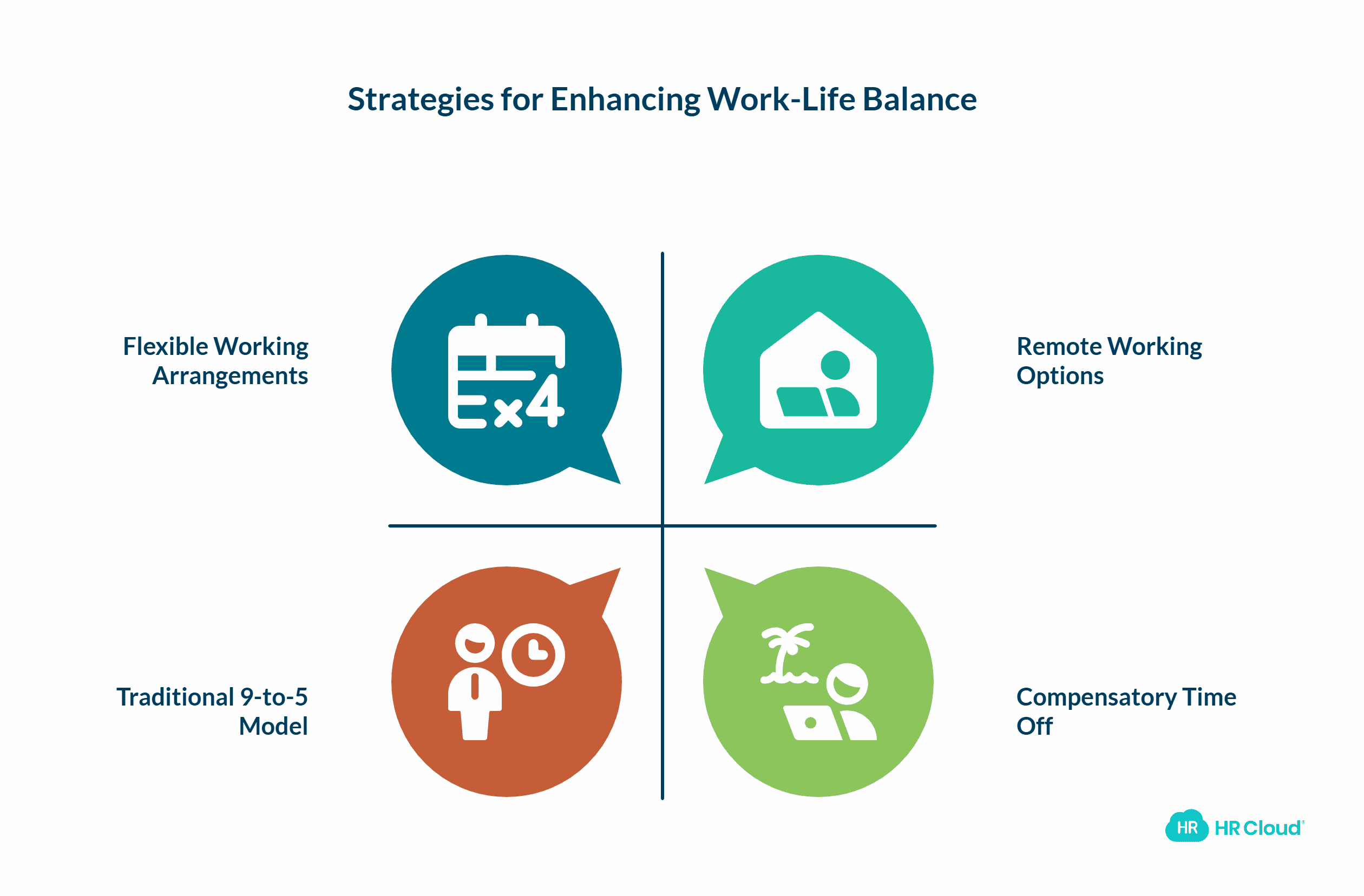
Employees want to have time with their families, hobbies, and other activities outside of work. More and more employees want flexible work schedules that allow them to care for their professional and personal lives.
So, make sure that there is no room for employee burnout in your workplace. Burnout happens when individuals feel out of control or under a lot of daily stress. Not only will this decrease their productivity, but it will also affect their mental and physical health and overall employee satisfaction.
What You Can Do:
To improve your employees’ work-life balance, every now and then, ask yourself the following questions:
-
Do you regularly demand or expect employees to work after hours or on weekends?
-
Is a 50-hour workweek really “normal”?
-
Do you offer employees the tools, resources, and technologies they need to succeed?
Let your employees have time for themselves and their families. Rather than the traditional 9-to-5 model, consider offering remote working options.
You can also implement flexible working arrangements. This will allow employees the flexibility to manage their working hours. Plus, they can work from home if they need to! Encourage employees to set limits and use vacation time. But if late nights can’t be avoided, consider compensating them with more time off or additional recognition rewards.
7. Communication
Employees appreciate workplaces where they can freely voice their opinions, thoughts, ideas, and concerns without judgment or fear of retribution. So, always encourage your employees to communicate with you openly. Let them know that their opinions, ideas, thoughts, etc., are important to you and that you value them thoroughly.
Organizations that encourage open communication have a better work environment and have employees who are better engaged. They are also capable of fostering trust and respect between management and employees, contributing to a strong recognition culture.
What You Can Do:
There are various ways to encourage open communication in your organization. For example, you can establish regular channels for employee feedback, such as surveys, focus groups, or one-on-one meetings. You can also conduct open forums to discuss challenges, successes, and failures.
You should also have an open-door policy where employees feel comfortable approaching the management with their questions and concerns. Consider implementing a rewards platform that includes features for peer-to-peer recognition and feedback, further enhancing communication and appreciation within the organization.
8. Career Development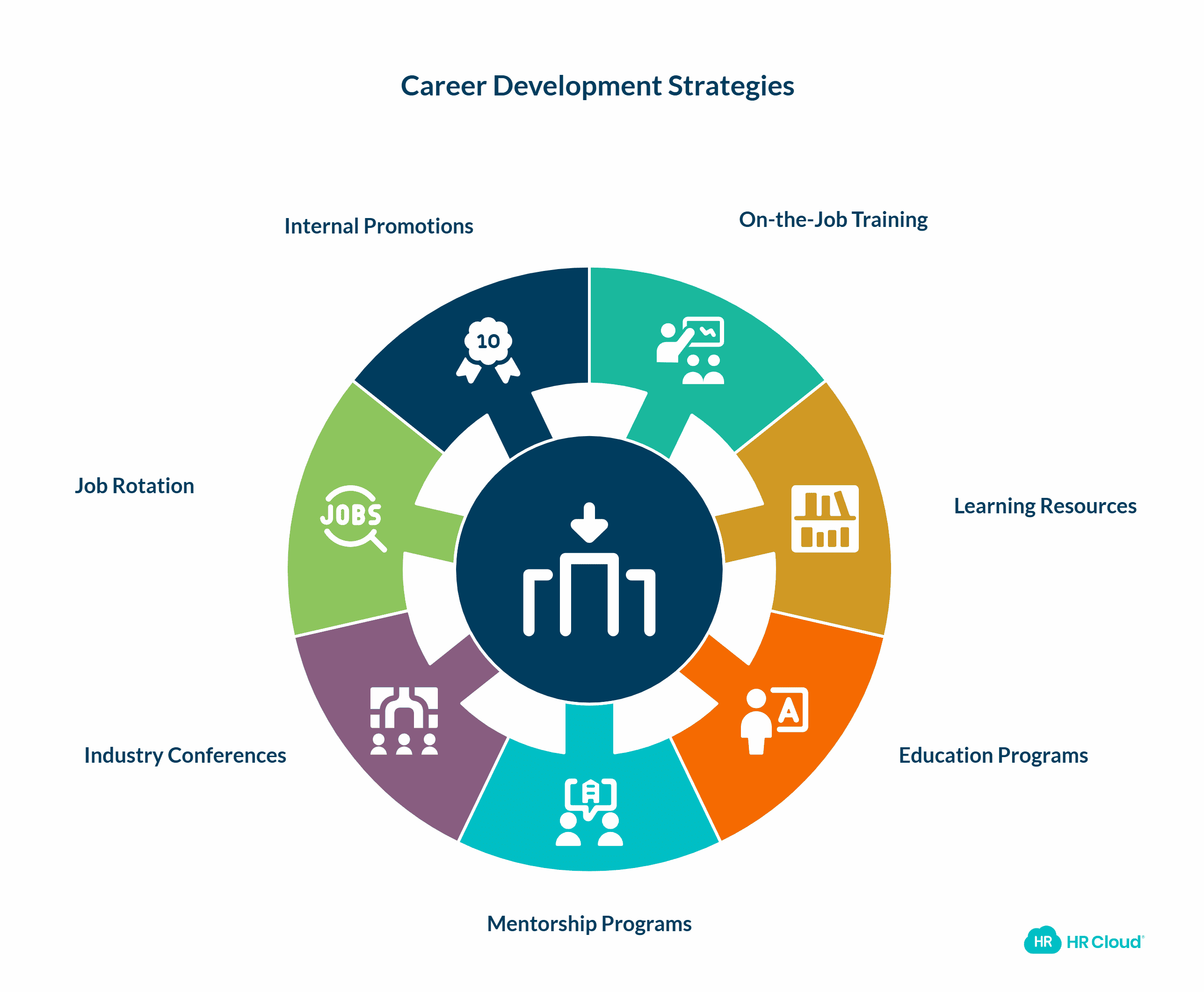
Your employees may sense a lack of growth opportunities within the company. Nobody enjoys completing the same monotonous tasks every day, especially when the scope of the work isn't expanding.
Employees feel insecure about their jobs when there is little room for advancement. This is when they begin seeking other opportunities.
Give your employees the opportunity to learn and grow. The idea is to create a ladder of career advancement where your employees can truly experience growth. This is very important to keep your workforce motivated and improve their efficiency as well.
Investing in your people shows that you care about their professional development and potential for advancement to more senior roles within the organization. This creates a good cycle of belonging, motivation, productivity, and staff retention.
What You Can Do:
Does your company have an employee retention program yet? If not, your employees are likely to look elsewhere. They’ll search for companies that recognize their contributions more quickly and offer prospects for growth.
Try offering on-the-job training, giving them access to learning resources, offering education programs, mentorship programs, etc. Sometimes it can be a good idea to encourage your employees to attend industry conferences and seminars as part of their learning process.
Another way to make that happen is to create job rotation and internal promotion opportunities. It is your responsibility to lay down a clear-cut career path for your employees.
For their continuous growth, you can provide top performers with training programs, seminars, and conferences, or in-company apprenticeships or mentoring. Alternatively, you can also connect them to online courses. Implement a formal recognition system tied to career development milestones to further motivate employees in their professional growth.
Happy Employees Stay Longer
Regularly review, reassess, and reinvent your employee retention strategy. Ensure that you meet your employees' needs. Remember, retention will come easily if you boost employee happiness in every process you implement throughout the workplace. By focusing on rewards and recognition, implementing effective employee reward systems, and fostering a culture of appreciation, you can significantly improve employee satisfaction and retention rates. A well-designed recognition platform can be a game-changer in this regard, providing a centralized system for managing and distributing employee recognition rewards.
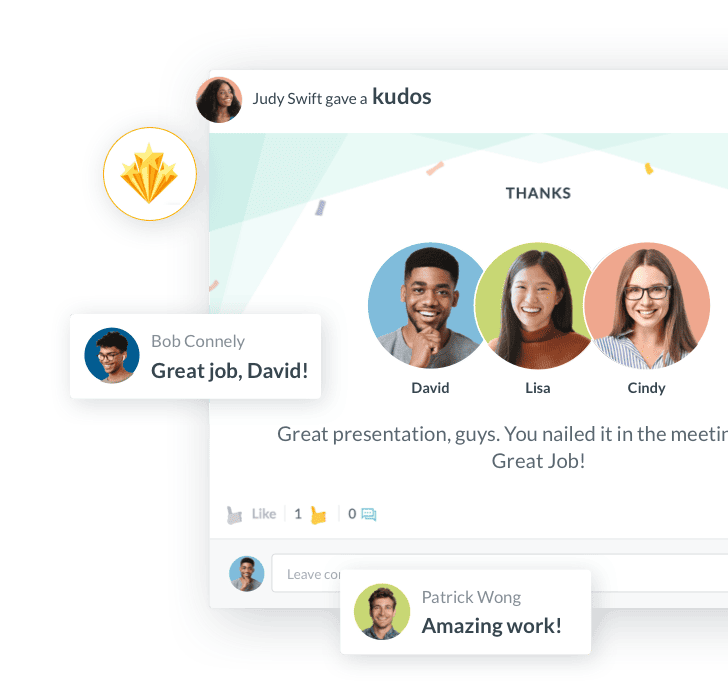

Keep Reading
The Hidden Metrics of Frontline Success: Beyond Engagement Scores
"What gets measured gets managed, but what gets measured well gets transformed." — Peter
Embracing Diversity: Recognizing Different Cultures in the Workplace
Workplaces today reflect the incredible diversity of the world around us. People bring
From Manual to Automated: A Complete Guide to Digitizing Employee Onboarding for Large Organizations
Sarah Chen, Director of HR at a 7,000-employee healthcare organization, starts her Monday
Like What You Hear?
We'd love to chat with you more about how HR Cloud® can support your business's HR needs. Book Your Free Demo

Build a Culture of Recognition. Boost Engagement. Guaranteed.
Workmates empowers employees to stay informed, connected, and appreciated—whether they’re on the front line, in the office, or remote. Recognition drives 12x higher engagement.Trusted by industry leaders in every sector




Cut Onboarding Costs by 60%.
Take the confusion and follow-ups out of onboarding with automated workflows, digital forms, and structured portals—so new hires ramp faster 3X quicker.Trusted by industry leaders in every sector




